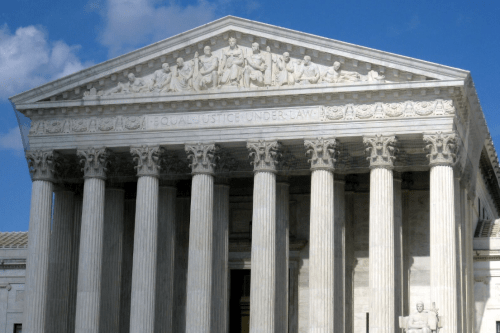Preface: The Continuity of Government
It is 11:30 a.m., inauguration day. Thousands await the noon hour when a new president will take the oath of office in the presence of members of Congress, the Supreme Court, family, and supporters. The outgoing president is meeting at the White House with his cabinet and top aides for a final farewell before attending the swearing in ceremony where the reins of power will switch hands. Television cameras have their cameras trained on the West Front of the Capitol, beaming live coverage of the event into millions of homes around the world.
Suddenly the television screens go blank! Al Qaeda operatives have detonated a small nuclear device on Pennsylvania Avenue halfway between the White House and the Capitol. A one-mile-radius circle of Washington is destroyed. Everyone present at the Capitol, the White House, and in between is presumed dead, missing, or incapacitated. The death toll is horrific, the symbolic effect of the destruction of our national symbols is great, but even worse, the American people are asking who is in charge, and there is no clear answer.
The incoming president and vice president are surely dead, so the presidency passes through the line of succession to the Speaker of the House and then to the President Pro Tempore of the Senate. But both of them were at the inaugural ceremony, as protocol requires, so the presidency passes to the cabinet officers—but which cabinet? The president-elect never took office and never confirmed a cabinet. The presidency passes through the line of succession to the cabinet officers of the departing administration, assuming they have not resigned by January 20th, as is standard procedure, and assuming that they were not at the White House bidding farewell to the outgoing president. Perhaps the Secretary of Veterans Affairs, or another lesser-known cabinet member, was not in the area; then he or she would become president. Or maybe no one in the line of succession is alive, and a number of generals, undersecretaries, and governors claim that they are in charge.
Congress has been annihilated as well, with only a few members who did not attend the ceremony remaining. It will be many months before Congress can function. Our Constitution requires a majority of each house of Congress to constitute a quorum to do business, and no such majority of the House or Senate exists. In addition, because of a series of past parliamentary rulings, there is confusion about whether there are enough members to proceed. The House’s official interpretation of the quorum requirement is a majority of the living members, a proposition that scholars have questioned. Under this interpretation, if only five House members survive, a group of three might proceed with business and elect a new Speaker who would become president of the United States, bumping any cabinet member who had assumed the presidency and remaining in office for the rest of the four-year term.
Because the House of Representatives can fill vacancies only by special election, the House might go on for months with a membership of only five. On average, states take four months to hold special elections, and in the aftermath of a catastrophic attack, elections would likely take much longer. Under the Seventeenth Amendment governors can fill vacancies within days by temporary appointment, therefore the Senate would reconstitute itself much more quickly than the House.
Imagine in this chaotic situation that all these events are taking place without access to normal organization, procedure, and communication channels. The confusion might very well lead to a conflict over who would be president, Speaker of the House, or commander in chief, and a cloud of illegitimacy would likely hang over all government action. The institution that might resolve such disputes is the Supreme Court. However, it is likely that the entire Court would be killed in such an attack, leaving no final tribunal to appeal to for answers to questions about succession and legislative and executive action. A new court could be appointed by a new president and confirmed by a new Senate, but which president, which Senate, and how soon? Further, would we want the entire Supreme Court appointed for life tenure by a disputed or unelected president?
As terrible as the events of September 11th were, we were fortunate that in the aftermath, our government was able to function through normal constitutional channels. It almost was not so. In interviews broadcast on the Al-Jazeera network, the 9/11 plotters have claimed that the fourth plane, United Flight 93, was headed for the Capitol (see Appendix II). This fourth plane took off forty-one minutes late, which allowed passengers to contact loved ones by cell phone and learn that their flight was on a suicide mission. Passengers stormed the cockpit, ultimately bringing down the plane and preventing it from hitting its target.
If United Flight 93 had departed on time and the hijackers had flown to Washington without interference, the plane might have hit the Capitol between 9:00 and 9:30 A.M. At nine o’clock the House met with Speaker J. Dennis Hastert (R-IL) presiding and recognized Representative Earl Blumenauer (D-OR), who spoke about the World Health Organization. Representative Tim Johnson (R-IL) took over the chair and recognized Representative Cass Ballenger (R-NC), who discussed the budget surplus. The chair then recognized Representative Peter DeFazio (D-OR), who talked about he Social Security Trust Fund. The floor was not heavily populated that Tuesday morning, with most business scheduled later that day, but there were still a number of members on the floor and many others in leadership offices or in private meetings in the Capitol. How many members of the House were in the building that morning is difficult to calculate, but it is clear that many would have perished. Had the attacks occurred a little later in the day, the toll would have been even greater. What if the plane had hit the Capitol the week before, on September 6, 2001, when Mexican President Vicente Fox addressed a joint session of Congress with the vice president and the president’s cabinet in attendance? What if the attack had been carried out during a major vote when almost all members were present.
…..
SUMMARY OF CENTRAL RECOMMENDATION
PROBLEM: If there were mass vacancies in the House of Representatives or large numbers of incapacitated members of the House or Senate, Congress would be unable to function for many months, leaving a vacuum in constitutional legislative authority. The Constitution provides only one method, a special election, for filling House vacancies. These elections take many months to hold while the seat remains vacant. If there were hundreds of House vacancies, the House might be unable to meet its constitutional quorum requirement of one-half the membership and would be unable to transact business. An alternative scenario, under a lenient quorum interpretation, would be the House continuing to operate with a small number of representatives—leaving most of the country unrepresented. The Constitution also does not provide an effective way for filling temporary vacancies that occur when members are incapacitated. With the real dangers of biological weapons, both the Senate and the House could be crippled if a large number of members were very sick and unable to perform their duties. The continuity of Congress also affects the presidency, as leaders of Congress are in the line of presidential succession. If the House of Representatives, decimated after an attack, elected a new Speaker, that Speaker could become president for the remainder of the term.
RECOMMENDATION: A constitutional amendment to give Congress the power to provide by legislation for the appointment of temporary replacements to fill vacant seats in the House of Representatives after a catastrophic attack and to temporarily fill seats in the House of Representatives and Senate that are held by incapacitated members. The commission recommends an amendment of a general nature that allows Congress to address the details through implementing legislation. It believes it is essential for such a procedure to operate under emergency circumstances if many members of Congress were dead or incapacitated, but the commission leaves Congress to decide the exact circumstances under which the procedure will take effect. It recommends that temporary representatives be appointed by governors or from a list of successors drawn up in advance by each representative or senator. Given the severe consequences of an attack on Congress, the commission believes that the amendment should be adopted within a two-year period.

